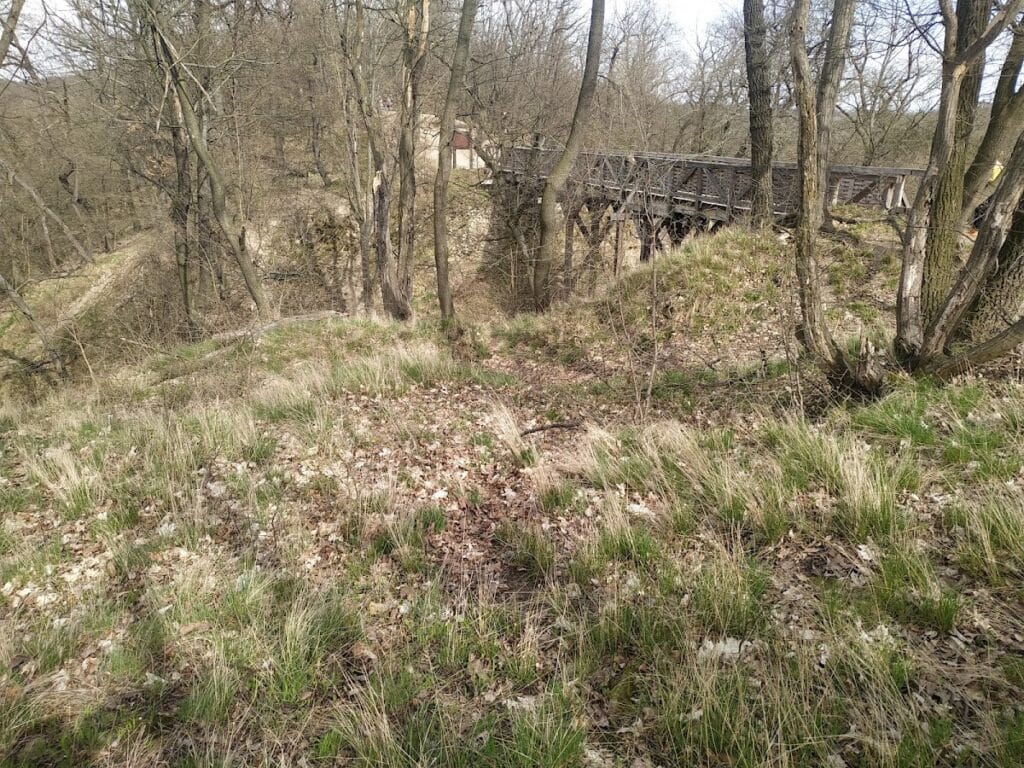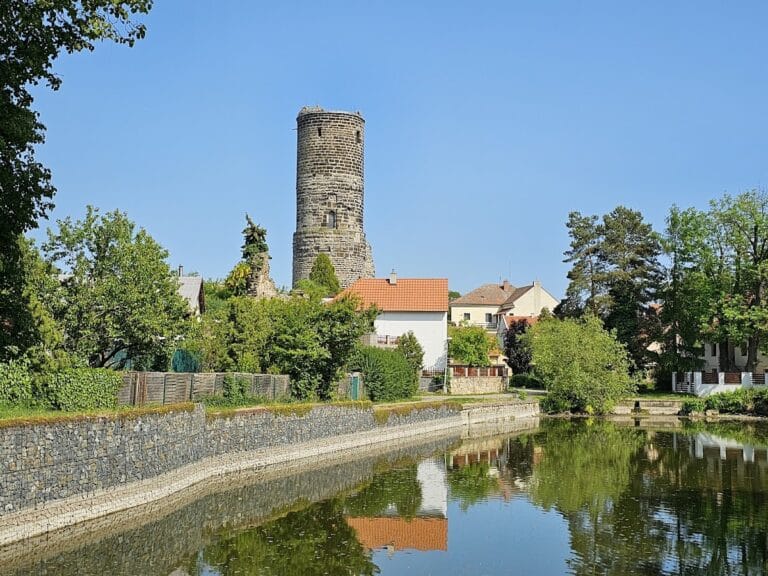Nový hrad u Kunratic: A Gothic Castle Ruin in Prague
Visitor Information
Google Rating: 4.6
Popularity: Low
Google Maps: View on Google Maps
Official Website: praha-kunratice.cz
Country: Czechia
Civilization: Medieval European
Remains: Military
History
Nový hrad u Kunratic is a Gothic castle ruin situated on a wooded promontory beside the Kunratice stream in the Prague district of Kunratice, Czech Republic. It was constructed in the early 15th century by the Bohemian ruler King Wenceslaus IV.
The castle’s construction was initiated in 1411 under King Wenceslaus IV, who intended it as a summer residence. Although not yet fully completed, records show the king stayed there as early as 1412. Wenceslaus IV planned to name the castle “Wenzelstein,” a personal tribute similar to Charles IV’s Karlštejn, but this name never gained popular acceptance. Instead, locals referred to the site simply as Nový hrad or Nový hrádek u Kunratic, meaning “New Castle near Kunratice.”
In 1419, Nový hrad gained historical importance as the place where King Wenceslaus IV learned of the defenestration of councillors from Prague’s New Town. This violent event deeply affected him, leading to a severe stroke or heart attack that caused his death at the castle on August 16, after hours of decline. The king’s passing at this fortress marked a turning point, coinciding with the early stages of the Hussite revolution.
Following his death, the castle’s fate was closely tied to the unrest that engulfed the region. In December 1420, it came under siege by Prague citizens aligned with the Hussite cause. The castle fell and was set ablaze on January 27, 1421, and was subsequently abandoned without reconstruction. Over time, parts of the remaining stone walls were taken apart to provide material for nearby buildings.
Political and religious use of the site continued sporadically. Between 1735 and the late 18th century, a chapel dedicated to St. John of Nepomuk existed within the castle’s ruins, reflecting ongoing spiritual significance tied to the site. Yet, by the late 19th century, the Kunratice estate’s administration deliberately reduced most of the remaining above-ground walls to cellar level. This demolition served to prevent the ruins from attracting visitors and obscured the once imposing structure. The site also included slate quarries, indicating some local industrial activity around the ruins.
In the mid-20th century, archaeologists from the National Museum undertook research focusing on the castle’s role during the Hussite period. Excavations brought to light a stone fireplace cornice and artifacts such as ceramics, metal tools, arrows, and axes associated with the castle’s capture. The fireplace cornice was reconstructed and placed on display in the museum’s Lapidarium by 1958.
Since 1965, the castle ruins have been officially recognized and protected as a cultural monument. Conservation efforts carried out between 2012 and 2013 included removing vegetation that damaged masonry, partial restoration of walls, structural reinforcement, and construction of a wooden pedestrian bridge over the neck ditch, all aimed at preserving the site’s remains.
Remains
Nový hrad’s original layout included two palaces, a rectangular tower, and two gates controlling access. These main elements were enclosed within a stone construction characteristic of Gothic fortifications, while a surrounding outer bailey formed an unfortified courtyard beyond an additional wall and a moat that separated it from the main castle area.
Today, only modest fragments of the rectangular palace walls survive, along with the remains of what is likely the corner of the tower distinguished by a sharp edge. The outlying bailey still preserves traces of earthworks dating back to the siege during the Hussite wars. These earthworks provide a physical record of the castle’s violent conquest in the early 15th century.
The castle’s stone construction included features such as a fireplace, represented now by a recovered stone cornice. This decorative piece was carefully reconstructed and is exhibited in the National Museum’s Lapidarium, offering insight into the interior details of the once inhabited halls. The masonry visible at the site reveals the stonework techniques used in the defensive walls and residential buildings.
Subsequent eras saw parts of the castle dismantled. In the 18th century, a chapel dedicated to St. John of Nepomuk was built amid the ruins, illustrating reuse of the site for religious purposes, although the chapel itself does not survive above ground today. Later, the remaining outer walls were intentionally demolished down to just below ground level, a measure aimed at discouraging visitation.
Recent conservation initiatives involved clearing damaging vegetation from the walls, stabilizing vulnerable structures, and rebuilding portions of the stone walls to preserve the ruins’ integrity. Notably, a new wooden bridge has been installed over the neck ditch, the defensive trench that once protected the castle’s entrance, facilitating access to the site while highlighting this key architectural feature.
The ruins remain accessible via a marked blue trail, allowing direct engagement with the remaining structures and the visible earthworks from the Hussite siege. This combination of stone remnants and landscape features provides a tangible connection to the castle’s complex history as a royal summer residence, a site of political upheaval, and a battlefield.










